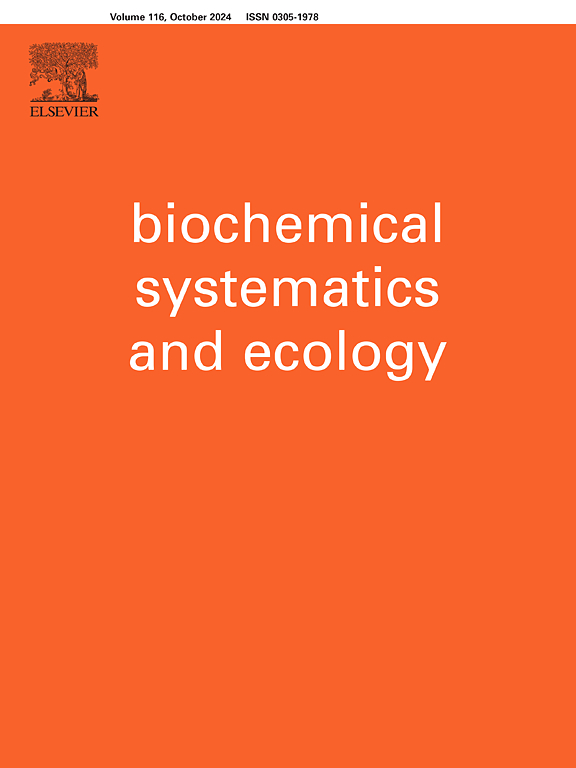臭椿翅果的化学成分及其化学分类意义
IF 2
4区 生物学
Q4 BIOCHEMISTRY & MOLECULAR BIOLOGY
引用次数: 0
摘要
通过细致的分析,臭椿属植物的翅果。Swingle已被发现含有12种独特的化学成分,包括4种类麻素(1-4),7种木脂素(5-11)和1种蒽醌(12)。其中,化合物1经MS、NMR和ECD综合分析鉴定为一种新的拟西葫芦类化合物。值得注意的是,化合物1、5-6、9和12标志着它们首次在simaroubacae科中被发现。此外,还进行了化合物家族网络分析,以研究鉴定的分离株的化学分类意义。本文章由计算机程序翻译,如有差异,请以英文原文为准。

Chemical constituents from the samara of Ailanthus altissima and their chemotaxonomic significance
Through meticulous analysis, the samara of Ailanthus altissima (Mill.) Swingle has been found to contain 12 unique chemical constituents, comprising four quassinoids (1–4), seven lignans (5–11) and one anthraquinone (12). Of these, a novel quassinoid, compound 1, was identified by comprehensive analysis of its MS, NMR and ECD data. Significantly, compounds 1, 5–6, 9 and 12 mark their inaugural detection within the Simaroubaceae family. Furthermore, a compound-family network analysis was conducted to investigate the chemotaxonomic implications of the identified isolates.
求助全文
通过发布文献求助,成功后即可免费获取论文全文。
去求助
来源期刊

Biochemical Systematics and Ecology
生物-进化生物学
CiteScore
3.00
自引率
12.50%
发文量
147
审稿时长
43 days
期刊介绍:
Biochemical Systematics and Ecology is devoted to the publication of original papers and reviews, both submitted and invited, in two subject areas: I) the application of biochemistry to problems relating to systematic biology of organisms (biochemical systematics); II) the role of biochemistry in interactions between organisms or between an organism and its environment (biochemical ecology).
In the Biochemical Systematics subject area, comparative studies of the distribution of (secondary) metabolites within a wider taxon (e.g. genus or family) are welcome. Comparative studies, encompassing multiple accessions of each of the taxa within their distribution are particularly encouraged. Welcome are also studies combining classical chemosystematic studies (such as comparative HPLC-MS or GC-MS investigations) with (macro-) molecular phylogenetic studies. Studies that involve the comparative use of compounds to help differentiate among species such as adulterants or substitutes that illustrate the applied use of chemosystematics are welcome. In contrast, studies solely employing macromolecular phylogenetic techniques (gene sequences, RAPD studies etc.) will be considered out of scope. Discouraged are manuscripts that report known or new compounds from a single source taxon without addressing a systematic hypothesis. Also considered out of scope are studies using outdated and hard to reproduce macromolecular techniques such as RAPDs in combination with standard chemosystematic techniques such as GC-FID and GC-MS.
 求助内容:
求助内容: 应助结果提醒方式:
应助结果提醒方式:


